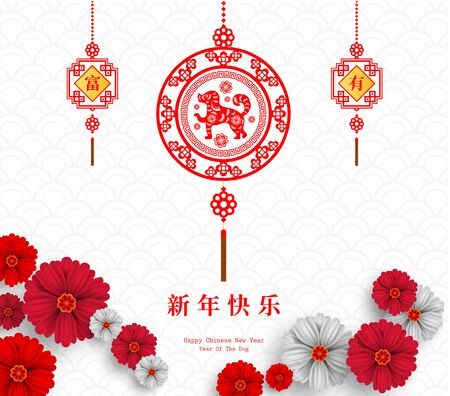Introduction to Seasonal Feng Shui
Feng Shui, an ancient Chinese practice, centres on harmonising individuals with their environment through the thoughtful arrangement of space and the mindful use of natural elements. Rooted in centuries-old philosophy, Feng Shui interprets the flow of energy—known as “qi”—to promote well-being, prosperity, and balance within homes and workplaces. Traditionally, Feng Shui has always considered seasonal changes as a vital component, adapting recommendations to support comfort and vitality throughout the year. In the UK, with its distinctive climate and rich tapestry of seasonal traditions, these principles can be thoughtfully tailored to align with local weather patterns and cultural customs. As more Britons seek holistic approaches to living—emphasising health, comfort, and connection to nature—the relevance of seasonal adaptation within Feng Shui becomes increasingly significant. Embracing this perspective allows for a seamless blend of ancient wisdom with modern British lifestyles, encouraging residents to engage with their spaces in ways that reflect both their heritage and contemporary needs.
2. The Unique Challenges of British Seasons
Adapting Feng Shui to the UK requires a keen understanding of how Britain’s distinct seasonal patterns influence our daily lives. Unlike many Asian climates where Feng Shui originated, the UK is known for its unpredictable weather, frequent rain, and significant variations in daylight throughout the year. These environmental factors profoundly affect the flow of energy—or “qi”—within British homes, shaping our mood, routines, and even our relationships with living spaces.
Analysis of Weather Patterns and Daylight Variations
The UK experiences four marked seasons, each bringing unique challenges that must be considered when applying Feng Shui principles. The following table illustrates the key characteristics of each season and their potential impact on home life:
| Season | Weather Characteristics | Daylight Hours | Influence on Energy & Mood |
|---|---|---|---|
| Winter | Cold, damp, overcast, frequent rain or snow | Short (as little as 7-8 hours) | Low natural light can lead to sluggish energy and lower mood; increased need for warmth and cosiness indoors |
| Spring | Milder temperatures, unpredictable showers, occasional sunshine | Increasing (10-14 hours) | Renewed energy and optimism; opportunities for refreshing home layouts and inviting fresh air |
| Summer | Warm spells mixed with rain; rare heatwaves; variable cloud cover | Long (up to 17 hours) | Abundant light supports active lifestyles but can highlight clutter or imbalance in space; ventilation becomes important |
| Autumn | Crisp air, increasing rainfall, cooling temperatures | Decreasing (14-8 hours) | A natural time for decluttering and preparing the home for winter; mood may fluctuate as days shorten |
The British Context: Practical Implications for Feng Shui
The interplay between weather and daylight means that energy management in UK homes cannot rely solely on traditional Feng Shui practices. For example, while maximising sunlight is vital across all cultures, it becomes especially crucial in British winters when lack of daylight can contribute to Seasonal Affective Disorder (SAD). Conversely, summer’s extended evenings invite more social gatherings but require strategies to keep indoor environments balanced and restful.
Cultural Traditions Meet Climate Realities
British traditions—such as afternoon tea by the fire during colder months or embracing outdoor living during brief sunny periods—reflect an adaptive approach to these seasonal shifts. Integrating Feng Shui into this context involves not just arranging furniture or selecting auspicious colours, but also responding intelligently to the rhythms of the British climate. By doing so, we can create homes that nurture wellbeing all year round.

3. Translating Feng Shui Elements to British Homes
Adapting the five classical Feng Shui elements—wood, fire, earth, metal, and water—to the context of British homes requires both cultural sensitivity and practical understanding of local architecture. Traditional UK properties, whether Victorian terraces, Edwardian semis, or modern flats, have unique spatial layouts and design features that influence how these elements are best represented.
Wood: Harnessing Growth in Compact Spaces
British homes often feature smaller rooms and limited outdoor space. To introduce the wood element—symbolising growth and vitality—consider using tall indoor plants such as ferns or snake plants near bay windows or conservatories. Opt for wooden picture frames or shelving to echo natural textures, especially in north- or east-facing rooms where energy can feel stagnant. Lighter woods like oak or ash suit the subtle palettes common in British interiors.
Fire: Inviting Warmth Amidst Grey Skies
The UK’s frequently overcast weather makes the fire element essential for uplifting energy. Integrate fire through accessories: crimson cushions, copper lamps, or even a traditional fireplace if available. In typical British lounges with neutral tones, a pop of red or orange can enliven the space without overwhelming it. Candles on mantelpieces also provide both literal and symbolic warmth.
Earth: Grounding in Period Properties
Earth brings stability—a valuable asset in older homes with quirky layouts or uneven floors. Incorporate this element via ceramics, terracotta pots, and natural stone coasters in kitchens or hallways. Soft furnishings in beige or ochre shades offer grounding energy and work well with the muted colour schemes favoured in many UK homes.
Metal: Clarity in Modern Living Spaces
Modern British flats often embrace minimalist designs that pair well with metal’s qualities of precision and clarity. Utilise metallic photo frames, chrome light fixtures, or brushed steel handles to introduce metal subtly. In home offices or study nooks—a staple of contemporary UK living—metal desk organisers promote focus and efficiency.
Water: Flow and Tranquillity in British Interiors
Water is essential for promoting flow and adaptability, particularly beneficial in narrow corridors or semi-detached houses where energy may feel constricted. Use reflective surfaces like mirrors strategically to expand visual space and encourage movement of Qi. Dark blue accents or small indoor fountains can be effective in bathrooms or entrance halls, providing a sense of calm amidst the bustle of daily British life.
By thoughtfully translating these five elements into your household using materials and motifs sympathetic to British tastes and layouts, you can harmonise ancient wisdom with local tradition—creating spaces that feel both rooted and revitalised throughout every season.
4. Spring to Winter: Room-by-Room Adjustments
Adapting Feng Shui principles to the British climate means recognising the unique challenges and opportunities each season brings, from damp winters to surprisingly bright summer evenings. A room-by-room approach allows homeowners to harmonise their living spaces with both ancient wisdom and local traditions, enhancing comfort, energy flow, and aesthetic appeal year-round.
Spring: Awakening Energy
Spring in the UK is often unpredictable, with fluctuating temperatures and frequent showers. To invigorate your home after winter’s lull:
- Living Room: Introduce fresh greenery such as daffodils or hyacinths, which are traditional spring flowers in Britain. Opt for pastel cushions or throws in sage green, sky blue, or soft yellow to echo renewal and optimism.
- Bedroom: Swap heavy winter duvets for lighter bedding in floral or botanical prints. Open windows regularly to refresh stagnant chi (energy) and dispel winter dampness.
Summer: Maximising Light and Space
The extended daylight hours of British summer call for adjustments that enhance brightness and ventilation:
- Kitchen: Use bowls of seasonal fruit (like strawberries or gooseberries) as centrepieces to symbolise abundance. Consider a light colour scheme—creams, whites, or pale blues—to reflect sunlight and maintain a sense of freshness.
- Garden/Patio: Arrange outdoor seating to face east or southeast, inviting morning sun and positive energy. Incorporate water features such as birdbaths to balance fire energy during hot spells.
Autumn: Embracing Warmth and Harvest
As the nights draw in and temperatures cool, British homes benefit from cosier décor and grounding colours:
- Dining Room: Incorporate earthy tones—deep reds, ochres, or browns—in table runners or crockery. Display autumnal produce like apples or pumpkins as part of your décor.
- Hallway: Add a sturdy mat and umbrella stand to manage wet shoes and coats, keeping pathways clear for smooth chi flow despite the increase in rain.
Winter: Cultivating Comfort and Resilience
The long, dark winters in the UK demand strategies for warmth, light, and emotional uplift:
- Lounge: Layer sofas with rich-textured throws in jewel tones (emerald green, sapphire blue) for depth and protection. Use soft lighting—table lamps or fairy lights—to combat early sunsets without harsh overhead glare.
- Bathroom: Place aromatic candles or eucalyptus bundles to purify air and elevate mood during cold snaps. Ensure good ventilation to prevent damp—a common challenge in British winters.
Seasonal Feng Shui Adjustments Table
| Room | Spring | Summer | Autumn | Winter |
|---|---|---|---|---|
| Living Room | Pastel décor, fresh flowers | Pale colours, airy layout | Cushions in warm hues | Rich throws, layered lighting |
| Bedroom | Lighter bedding, fresh air | Breezy curtains, minimal clutter | Knit blankets, warm lamps | Thermal sheets, deep colours |
| Kitchen/Dining | Potted herbs on windowsill | Bowl of seasonal fruits | Auburn tableware, harvest displays | Candles, hearty textures |
| Entrance/Hallway | Shoe rack decluttered | Lighter mats/rugs | Mud-proof mats/umbrella stand | Draught excluders |
The Synthesis of Feng Shui & British Tradition
This tailored approach ensures that each room supports wellbeing throughout the year by blending classic Feng Shui guidance with distinctly British habits—from afternoon tea rituals to garden gatherings—while also countering the country’s variable weather patterns. By mindfully updating colours, materials, and layouts as seasons change, you create a home that feels harmonious, resilient, and uniquely suited to life in the UK.
5. Incorporating British Traditions and Celebrations
Blending the ancient principles of Feng Shui with the vibrant tapestry of British customs presents a unique opportunity to foster both cultural harmony and energetic flow in UK homes. By thoughtfully aligning seasonal Feng Shui adjustments with cherished local festivities, such as Bonfire Night, Easter, and Christmas, you can create living spaces that are not only energetically balanced but also deeply rooted in British heritage.
Bonfire Night: Embracing Warmth and Letting Go
Guy Fawkes Night is a quintessentially British celebration marked by bonfires and fireworks. In Feng Shui terms, fire represents transformation and purification. To harness this energy, consider safely incorporating elements of red, orange, or gold décor around your home during early November. Candles or a feature fireplace can symbolically echo the communal bonfire, helping to burn away stagnation and welcome new beginnings. As you tidy up post-celebration, mindfully let go of clutter—mirroring the tradition’s spirit of renewal.
Easter: Inviting Growth and Renewal
Easter aligns naturally with Feng Shui’s springtime focus on growth and fresh energy. Take inspiration from British traditions like egg hunts and garden gatherings by introducing symbols of renewal throughout your space. Fresh flowers, pastel colours, or bowls of painted eggs can enhance the Wood element in your home, encouraging vitality and harmony. Consider opening windows to allow invigorating spring breezes to circulate chi, while also arranging furniture to maximise natural light during this season.
Christmas: Cultivating Togetherness and Joy
Christmas is synonymous with togetherness in the UK. To amplify festive cheer through Feng Shui, focus on creating inviting communal areas using warm lighting, plush seating, and round tables that encourage conversation. Incorporate traditional British decorations—such as holly wreaths or mistletoe—but place them intentionally near entrances or social hubs to attract positive energy and reinforce bonds among family and friends. The use of golds, reds, and greens not only honours local tradition but also strengthens supportive Earth and Fire elements in your home.
Fostering Year-Round Cultural Synergy
The key to integrating Feng Shui with British traditions lies in mindful adaptation rather than rigid application. By recognising the deeper intentions behind each celebration—be it gratitude, hope, or community—you can tailor ancient wisdom to fit local customs without losing authenticity. In doing so, you cultivate a living environment that respects both the rhythms of nature and the richness of UK culture, ensuring your home remains a sanctuary for all seasons.
6. Sustainable and Localised Feng Shui Practices
When adapting Feng Shui to the unique context of the UK, embracing sustainable and localised practices is not only environmentally responsible but also enhances the cultural relevance of this ancient art. British weather, native flora and fauna, and architectural traditions offer a distinctive backdrop that invites thoughtful integration rather than a one-size-fits-all approach.
Using Local, Sustainable Materials
One of the most effective ways to ground Feng Shui in the British Isles is by choosing materials that are both locally sourced and environmentally friendly. For example, reclaimed wood from historic buildings, stone from regional quarries, or wool textiles produced in the UK add a layer of authenticity to your living space. These choices reduce carbon footprints associated with transport and production while supporting local artisans and businesses. Incorporating these elements into furniture, decorative objects, or even garden structures ensures that your home resonates with the landscape’s natural rhythm.
Respecting Native Flora and Fauna
Classic Feng Shui often emphasises harmony with nature; in Britain, this means prioritising native plants such as bluebells, foxgloves, or wild thyme in your gardens and interiors. Not only do these species thrive in local conditions—making them low-maintenance and resilient—but they also provide habitats for indigenous wildlife like bees, butterflies, and songbirds. Creating garden layouts or indoor plant displays that highlight these species can foster a sense of place while supporting biodiversity.
Eco-Friendly Adjustments for British Homes
The UK’s ever-changing seasons present an opportunity to tailor Feng Shui recommendations to suit the climate. Instead of tropical bamboo fountains or imported crystals, consider rainwater harvesting systems, hedgerows for wind protection, or energy-efficient window dressings crafted from British linen. These adjustments align with core Feng Shui principles—balance, flow, and wellbeing—while promoting ecological stewardship within the household.
Cultural Grounding Through Mindful Choices
Finally, rooting your Feng Shui practice in British tradition means acknowledging regional customs and aesthetics. From incorporating Celtic motifs in décor to celebrating solstices with seasonal arrangements, these mindful choices allow your space to reflect both ancient wisdom and contemporary British identity. By weaving together sustainability, locality, and respect for native species, you create a harmonious environment attuned to both nature’s cycles and cultural heritage.
7. Conclusion: Embracing Ancient Wisdom, the British Way
As we have explored throughout this article, adapting Feng Shui to the UK’s unique climate and cherished traditions is not only possible, but also deeply enriching. By thoughtfully considering the rhythm of British seasons—whether it’s the gentle light of an English spring or the bracing winds of a Scottish winter—we can integrate ancient Chinese principles into our daily lives in ways that feel authentic and practical. This approach moves beyond mere aesthetics; it fosters a deeper sense of wellbeing, encouraging us to live more mindfully within our own cultural context. Ultimately, embracing Feng Shui the British way means respecting both tradition and innovation, creating homes and spaces that are harmonious reflections of who we are and where we live. It’s about finding balance between heritage and modern life, and using thoughtful adaptation as a tool for cultivating comfort, positivity, and mindful living all year round.


